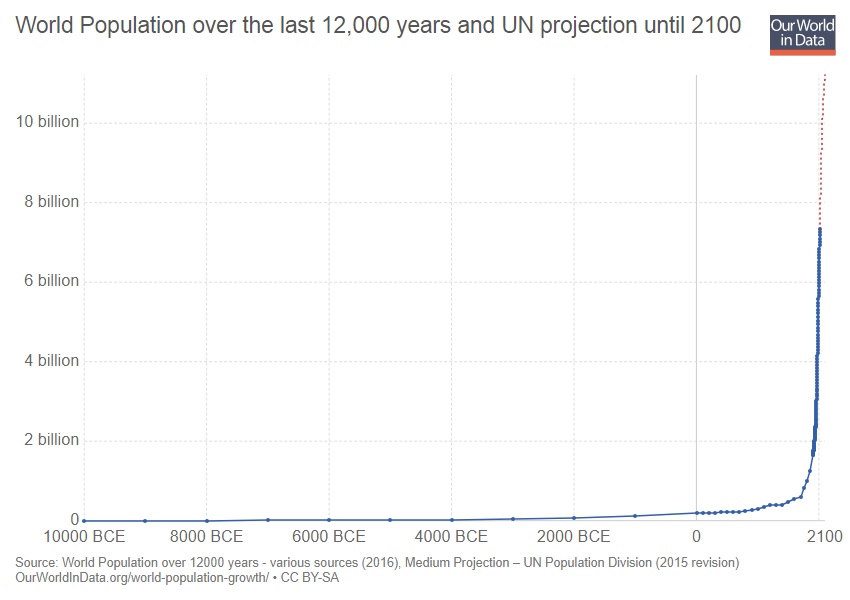Our World in Data, the web site of Max Roser, visualizes data in amazing ways. Check out this graph of world population:
“World Population over the last 12,000 years and UN projection until 2100” by Our World in Data is licensed under CC BY-SA 3.0. The graphs which follow are derived from this information and are licensed for use by others under the same CC BY-SA 3.0 license.
Very cool. The dramatic expansion in the number of people is amazing.
The graph includes projections through 2100. I pulled out the projections and developed the following graph:


 Very cool to look at the ebb and flow of the people groups discussed in the Old and New Testament – the Egyptians giving way to the Babylonians and Assyrians. Then the Persians and Greeks and Romans. Then the Ottoman Turks, then British & other European powers. The map stops in 1931, at the start of the Great Depression and between the two world wars.
Very cool to look at the ebb and flow of the people groups discussed in the Old and New Testament – the Egyptians giving way to the Babylonians and Assyrians. Then the Persians and Greeks and Romans. Then the Ottoman Turks, then British & other European powers. The map stops in 1931, at the start of the Great Depression and between the two world wars.